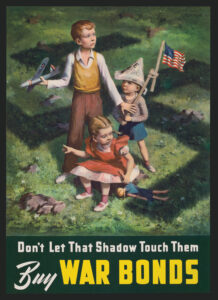The Polish Deportees of World War II: Recollections of Removal to the Soviet Union and Dispersal Throughout the World
Edited by Tadeusz Piotrowski. 256 pp. McFarland, 2008. $39.95.
They were awakened at two, three, or four in the morning and given fifteen minutes, a half-hour, or an hour to pack. The younger children were crying, especially when separated from their pets, which were sometimes shot. The families were brought on sleighs, carts, or trucks through the snow-covered landscape to the railway station, where they were packed into freight cars that had shelves for sleeping, a stove with little fuel, and a hole cut in the floor for waste. They waited for hours or days before they were taken to the frigid Russian interior; the weakest died along the way.
Chalk up another atrocity for “Uncle Joe” Stalin. In September 1939, after the Soviet Union occupied Eastern Poland in accordance with the Soviet-German Nonaggression Pact, Stalin planned to use a tactic that the czars had repeatedly tried on a lesser scale for long-term control of this vast region. Secret documents explained the operation as the removal of “anti-Soviet elements,” but the net was cast so wide that the motive seemed more like ethnic cleansing—with the added benefit, of course, that it provided slave labor for the harsh, resource-rich areas of the Communist state. Members of political parties were targeted, but so were shop owners, persons maintaining contacts abroad, “Esperantists,” “Philatelists,” and “Religionists”—not only priests, but also the “active worshippers of religious congregations.”
The first-person recollections that make up this basic and moving history have a relentless similarity that amplifies the victims’ terror. They also illustrate the careful planning that went into this insane Stalinist exercise, which dispersed hundreds of thousands of Poles around the globe during World War II and killed unknown thousands in the process through hunger, exposure, and disease. It was a cruel and ironic mirror of Nazi genocide, and a precursor of contemporary horrors. The deportation could have taken most of the population, except for the fact that Hitler invaded his Soviet ally in 1941. Stalin then signed a pact with the Polish government in exile and the deportees were granted what was termed “amnesty.”
Their travails were just beginning, however. Somehow, they had to make their way south from remote villages and gulags to towns where Polish free armies were forming. Many left the Soviet Union with those units, continuing on to reception centers in the Middle East and then on to East Africa, India, New Zealand, and Mexico. Thousands of the oldest and youngest deportees died on each leg of the journey.
Their diaries and recollections are combined with the few official Soviet documents available to create a very effective presentation of this doleful yet picaresque saga. The documents reveal the conception and planning for the deportations. But the testimonies of those whose lives were changed instantly by a knock at the door, who underwent rapid reversals of fortune, read disconcertingly like Voltaire’s Candide. They bring home the experience of wartime chaos, when clueless individuals are flung about by ideology and fate, and the survivors wind up either wiser or just alive in a very different world.
Originally published in the July 2008 issue of World War II Magazine. To subscribe, click here.




